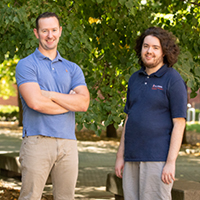
A new study from engineers at the University of Illinois, Urbana-Champaign uses simple experiments to explain how a better understanding of flowing motion of soft materials will help design new materials and could help predict some natural disasters.
Photo courtesy U.S. Geological Survey
CHAMPAIGN, Ill. — How does toothpaste stay in its tube and not ooze out when we remove the cap? What causes seemingly solid ground to suddenly break free into a landslide? Defining exactly how soft materials flow and seize has eluded researchers for years, but a new study explains this complex motion using relatively simple experiments. The ability to define – and eventually predict – soft material flow will benefit people dealing with everything from spreadable cheese to avalanches.
The study, which was performed at the University of Illinois, Urbana-Champaign, is published in the Proceedings of the National Academy of Science.
"We are finding that soft material flow is more of a gradual transition rather than the abrupt change the current models suggest," said chemical and biomolecular engineering professor Simon Rogers, who led the study and is an affiliate of the Beckman Institute for Advanced Science and Technology at the U. of I.
The team developed a new testing protocol that allows researchers to measure the individual solidlike and liquidlike behaviors of these materials separately – something never done before, said Gavin Donley, a graduate student and lead author of the study.
In the lab, the team subjected a variety of different soft materials – a polymer microgel, xanthan gum, a glasslike material and a filled polymer solution – to shear stress and measured the individual solidlike and liquidlike strain responses using a device called a rheometer.
"Our experiments show us a much more detailed and nuanced view of soft material flow," Donley said. "We see a continuous transition between the solid and liquid states, which tells us that the traditional models that describe an abrupt change in behavior are oversimplified. Instead, we see two distinct behaviors that reflect energy dissipation via solid and fluid mechanisms."
The team's immediate goal is to turn this experimental observation into a theoretical model that predicts soft material motion, Rogers said.
"The existing models are insufficient to describe the phenomena that we have observed," he said. "Our new experiments are more time-consuming, but they give us remarkable clarity and understanding of the process. This will allows us to push soft materials research forward in a slightly different direction than before. It could help predict the behaviors of novel materials, of course, but also help with civil engineering challenges like mudslides, dam breaks and avalanches."
The National Science Foundation, U.S. Department of Energy, Sandia National Lab and the Anton Paar VIP program supported this research.







